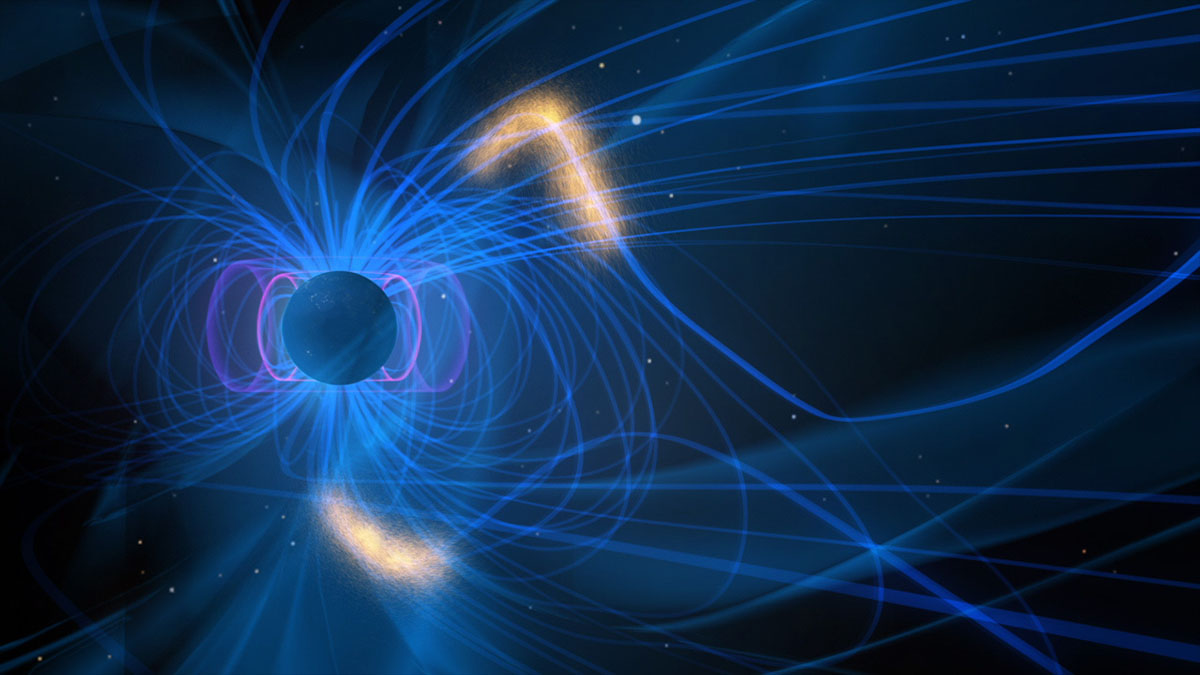our magnetic north pole is moving a lot faster than we thought, but that’s perfectly normal

Earth’s magnetic north pole appears to be escaping to Russia so quickly that models meant to keep track of its position until 2020 have to be updated early to make sure our navigation tools stay accurate. This is both a surprise and entirely expected because ever since we started trying to track the magnetic north pole, it’s been wandering wildly across the Arctic, driven by jets of molten iron created by the movements of the planet’s core. Likewise, in 2016, another burp of molten metal from the core created a magnetic pulse under South America, disrupting the overall magnetosphere and undermining the accuracy of the model tracking the polar shift.
is there anything to worry about?
In movies, when the Earth’s magnetic field changes and the poles start to move, tornadoes and lightning storms descend on cities and a plucky crew of heroes must restart the core, destroy a villainous mastermind’s doomsday device, or save humanity from an incoming space storm. In reality, magnetic poles and fields move all the time and even reverse seemingly at random with very few ill effects outside having to push software updates so ships don’t get lost at sea and planes know if they’re following the correct routes. So if you were reading the news about the movement of the poles and alarmed by all this, don’t be. You’ll be just fine.
According to a survey of magnetically sensitive minerals in volcanic rock, there have been 187 pole reversals over the last 83 million years, with some alignments lasting tens of millions of years and others less than a few centuries. While our magnetic field can weaken dramatically in a reversal event, losing as much as 95% of its strength, there is no correlation between pole shifts and natural disasters or mass die offs. At the same time, these curious events do impact our navigation tools, requiring software updates to compensate for the movement of the magnetic poles, which are, of course, different from the geographic ones.
where is magnetic north going?
Our maps say that the north pole is at the very top of the world, 90° 0’ 0” North and 0° 0” 0’ East. But the magnetic north pole has been zigzagging across the Canadian Arctic Archipelago at an average speed of 15 to 25 kilometers per year since 1590, when it was off the coast of Victoria Island, moving up, then down Ellington Island through the 1600s, landing back on Victoria Island in the 1730s, then making a beeline down to King William Island by the 1860s, followed by a sharp northward turn across Bathurst and Ellef islands as it headed out into the Arctic Ocean, accelerating towards Siberia at 55 kilometers per year.
Yes, it’s every bit as difficult to model and keep up with as it sounds, and requires constant double-checking to make sure the models got it within an acceptable margin of error. Right now, the magnetic north pole is less than 900 kilometers southeast of the geographic one. It may reverse course and return to Canada, or make a sharp turn towards Northern Europe. All of these are possible as it will wander around the world for billions of years, seemingly with no real pattern, following the turbulent jets of molten metal emanating from the core until the Earth either cools down to become a lifeless rock orbiting a white dwarf that used to be our sun, or is engulfed during our home star’s expansion into a gas giant.





